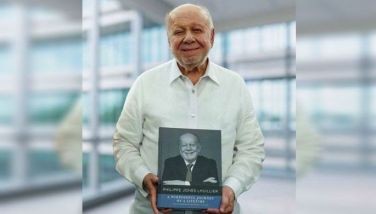Hands-on chemistry for all
Microscale chemistry was the focus of a three-day workshop that was recently held at the University of Santo Tomas in Manila and the University of San Agustin in Iloilo City. A new approach to the teaching of the chemistry laboratory course was presented that can improve the learning of chemistry in Philippine high schools.
Laboratory activities are essential in the teaching and learning of chemistry. The laboratory experiments make the students realize the basis of the concepts and principles taught to them in the lecture classes. These activities also show the practical applications of chemical knowledge. In the course of their work, the students develop useful critical thinking skills.
Unfortunately, in many high schools in the country, very few, if any at all, chemistry experiments are done by the students. The main reason is that the materials and equipment required for the laboratory activities require considerable financial resources. The shrinking or disappearance of laboratory work raises concern on the effectiveness in the delivery of the chemistry curriculum.
Microscale approach
In order to address the financial burden associated with laboratory activities, a non-traditional approach to laboratory work has emerged. The experiments were downscaled, the amount of chemicals used was decreased and simple equipment was used. Described as microscale chemistry, this approach involved a modified image of the chemistry laboratory.
A distinctive feature of this approach is the use of small amounts of materials. The traditional experiments involve liquids and solutions with volumes of 5, 10, 20 or 50 mL. The microscale experiments usually employ quantities as small as 0.5, 1 or 2 mL. Clearly, this introduces big savings in the conduct of the laboratory course.
The reduced scale of the experiments also brings with it other favorable features. The chemical waste generated by the laboratory is greatly diminished, eliminating concerns about pollution and waste disposal problems. Furthermore, safety hazards are greatly minimized, effacing the image of the traditional chemistry laboratory as a high hazard area.
Low-cost facilities
Microscale chemistry involves the use of low-cost, and even zero-cost, equipment. The traditional glass vessels, such as beakers, flasks and test tubes, are replaced by recycled vaccine vials or ampoules which can be obtained at zero-cost from hospitals or clinics.
Plastic wares, such as microwell plates and Eppendorf tubes, used in the microbiological and clinical laboratories, are used as containers where reactions are conducted. These materials are non-breakable, unlike glass. If purchased and used first-hand, these vessels cost very much less than the glassware used in the traditional laboratory experiments. These materials are disposed of after single use in the clinical laboratory, but they can be recycled for use in the microscale chemistry laboratories.
The measurement of liquids and solutions is usually done using a breakable glass cylinder or a glass pipette. In microscale experiments, this operation is carried out with plastic syringes which can be acquired at zero-cost from clinics and hospitals (after discarding the needles). The accuracy and precision of the scales of the common syringes have been found to be acceptable for the purpose of instructional experiments.
The weighing balance has been an expensive equipment which is important in many experiments. Many schools have acquired double-pan or triple-beam balances, and even the modern electronic balance, costing several thousands of pesos. In microscale chemistry, the use of the inexpensive jewelers’ pocket-sized electronic balance has been encouraged.
Global acceptance
The merits of microscale chemistry have been recognized by the International Union of Pure and Applied Chemistry (IUPAC). The IUPAC has been endorsing this approach as a strategy to encourage more laboratory activities in high schools. The recent workshop on microscale chemistry was conducted by Prof. Jorge Ibañez, a resource person of IUPAC from the Universidad Iberoamericana in Mexico City.
The United Nations Educational, Scientific and Cultural Organization (UNESCO) is promoting the use of this approach in the teaching of chemistry through its Global Microscience Project. It sees microscale chemistry as consistent with its advocacy of “science for all.” The UNESCO has donated to the University of Santo Tomas microscience kits for use in the conduct of workshops on microscale chemistry.
Indeed, the low cost of microscale chemistry experiments can be easily adopted in all high schools in the country. However, experiments have to be developed based on the available materials. Likewise, teachers have to be trained on microscale chemistry experiments. As a result, more hands-on activities will be done by our high school students. Chemistry experiments will be accessible to all high schools.
* * *
The author is a professor at the Department of Chemistry in the University of Santo Tomas. He is a fellow of the International Union of Pure and Applied Chemistry, and is actively involved in the International Microscale Chemistry Network. E-mail him at [email protected].
- Latest




























